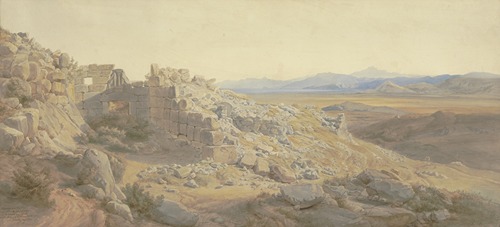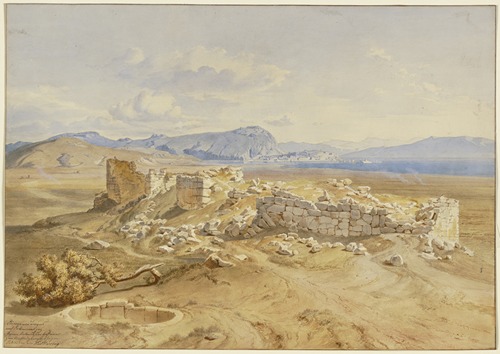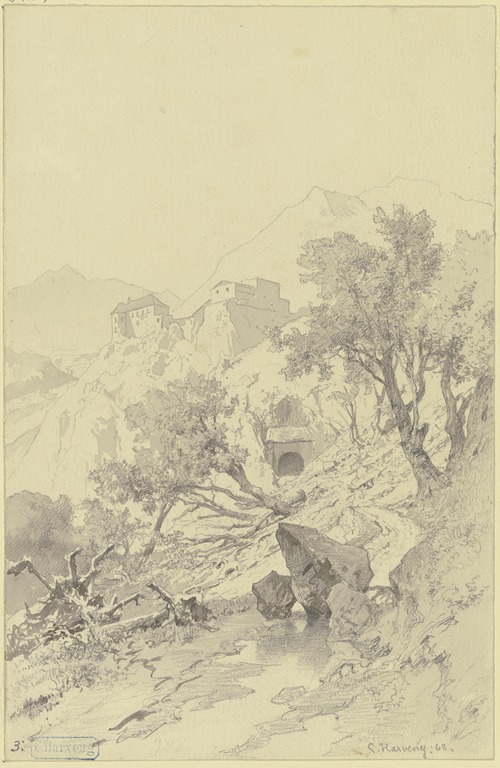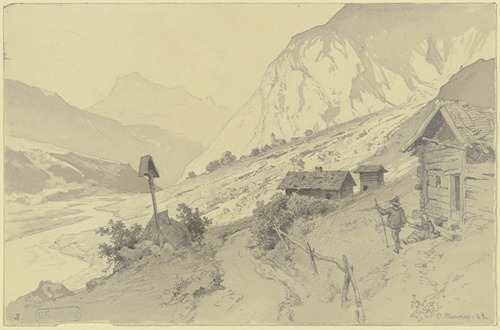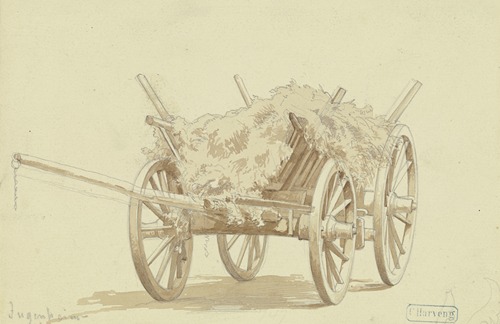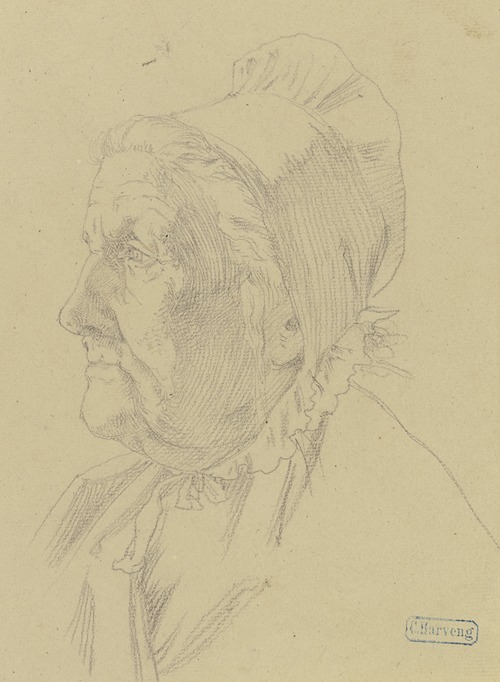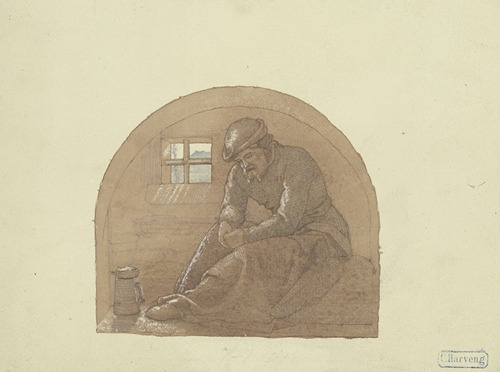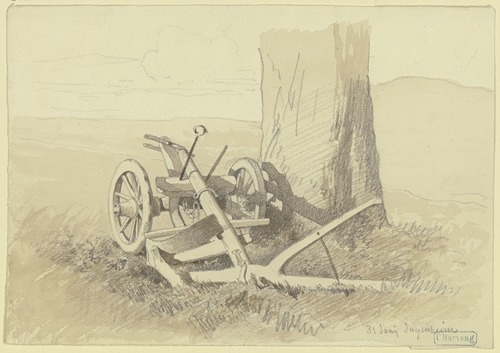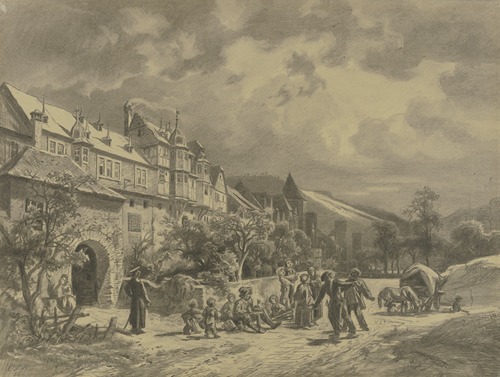Karl Friedrich Harveng
Carl Friedrich Harveng was a German landscape painter, graphic artist and draughtsman.
Harveng received private lessons in drawing from Friedrich Eugen Peipers in his early youth. From 1848 to 1854 he was a student at the Städel Institute, first with Friedrich Maximilian Hessemer, then with Jakob Becker and Eduard von Steinle. He went to the Academy of Fine Arts in Karlsruhe for further training and was a student in Johann Wilhelm Schirmer's landscape class there from 1854 to 1859. In 1862 he settled in Düsseldorf, where he was a member of the Malkasten artists' association from 1864 to 1867. Due to a lung ailment, he moved to Merano and further afield to northern Italy from 1866. He traveled to the Black Forest in southern Baden, the Alpine regions of Switzerland and Tyrol as well as southern France.
His landscape paintings bear witness to an intensive study of nature and a good eye for the characteristic. He was represented with works at exhibitions at the art associations in Munich (1863: Inneres eines Schwarzwälder Dorfes) and Karlsruhe (1867: Schwarzwaldlandschaft). He exhibited in Berlin from 1864 to 1866 and in Dresden in 1867. He also showed a Black Forest landscape at the Paris World Exhibition in 1867. The paintings Heidegrund im Schwarzwald and Schwarzwälder auf dem Weg zur Kirmes (1866) were created in Düsseldorf. Harveng also turned his studies into etchings; drawings appeared in the Illustrierte Zeitung in Leipzig and in "Weber's Illustrated Calendar", among other publications. A memorial exhibition was held by the Frankfurter Kunstverein in 1876.
